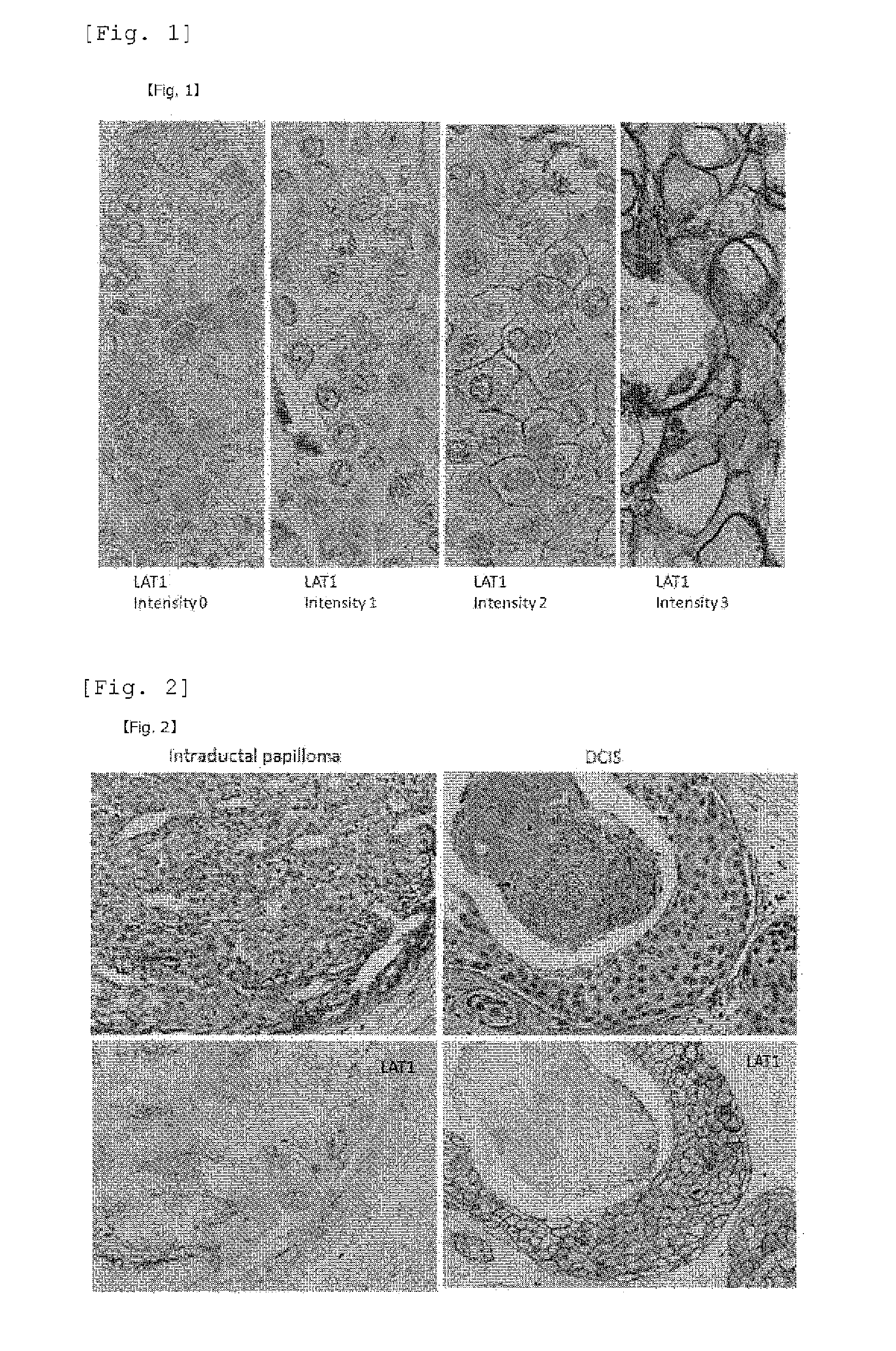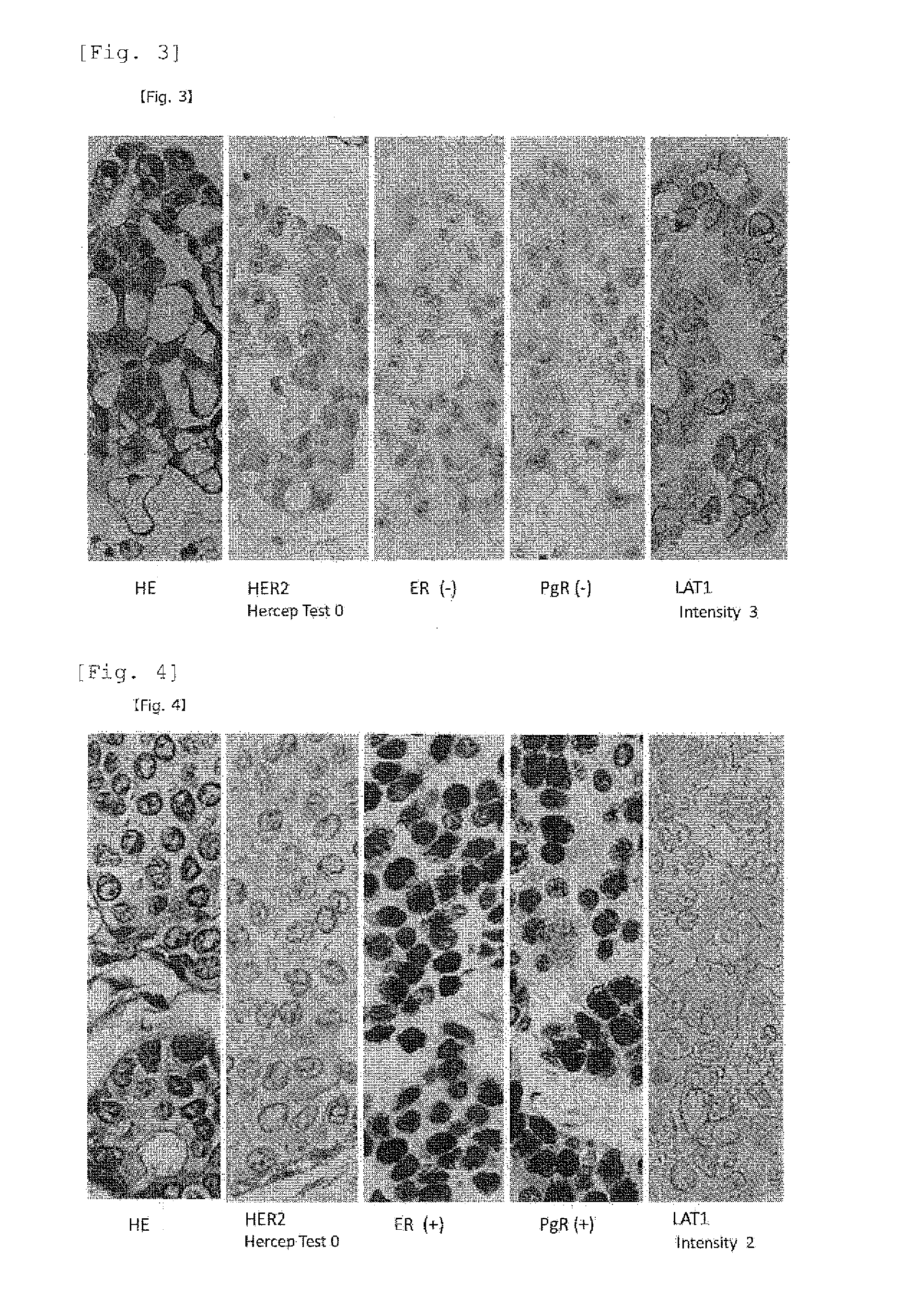Biomarker for breast cancer
a breast cancer and biomarker technology, applied in the field of breast cancer biomarkers, can solve problems such as difficult discrimination, and achieve the effects of poor prognosis, easy diagnosis, and effective breast cancer treatmen
- Summary
- Abstract
- Description
- Claims
- Application Information
AI Technical Summary
Benefits of technology
Problems solved by technology
Method used
Image
Examples
reference example 1
Extraction of Experimental Samples
[0095]Neoplastic lesions of mammary glands, which were surgically resected between 2005 and 2009 at a facility where the present inventors belonged, were randomly extracted. Pathological samples of surgical materials in a total of 87 cases including 10 cases of intraductal breast papilloma, 10 cases of ductal carcinoma in situ (DCIS), and 67 cases of infiltrating cancer (invasive carcinoma) were used. Among them, 17 cases were triple negative infiltrating carcinomas that were negative for all of ER, PgR, and HER2.
example 1
Staining Using an Anti-LAT Antibody
[0096]All the extracted neoplastic lesions of mammary glands in Reference Example 1 were subjected to 10% formalin fixation and a paraffin-embedded block was prepared, further prepared a thinly sliced section with a 3 μm in a thickness from a typical block having maximum divided face of neoplastic lesions. Furthermore, after activating with a microwave for 5 minutes, the sliced section was incubated with the anti-LAT1 mouse monoclonal antibody (refer to Non-Patent Literature 1 pp. 23, in FIG. 3A pp. 631) prepared by the present inventors at a temperature of 4° C. or lower overnight. Further, the section was added a universal antibody contained in a DAKO ChemMate ENVISION System HRP kit, and reacted at room temperature for 30 minutes, and then color was developed by reacting with a DAB (3,3′-diaminobenzidine tetrahydrochloride) substrate solution. For nucleus staining, methyl green or Mayer's Hematoxylin staining was carried out. For the immunostain...
PUM
| Property | Measurement | Unit |
|---|---|---|
| thickness | aaaaa | aaaaa |
| temperature | aaaaa | aaaaa |
| concentration | aaaaa | aaaaa |
Abstract
Description
Claims
Application Information
 Login to View More
Login to View More - R&D
- Intellectual Property
- Life Sciences
- Materials
- Tech Scout
- Unparalleled Data Quality
- Higher Quality Content
- 60% Fewer Hallucinations
Browse by: Latest US Patents, China's latest patents, Technical Efficacy Thesaurus, Application Domain, Technology Topic, Popular Technical Reports.
© 2025 PatSnap. All rights reserved.Legal|Privacy policy|Modern Slavery Act Transparency Statement|Sitemap|About US| Contact US: help@patsnap.com



